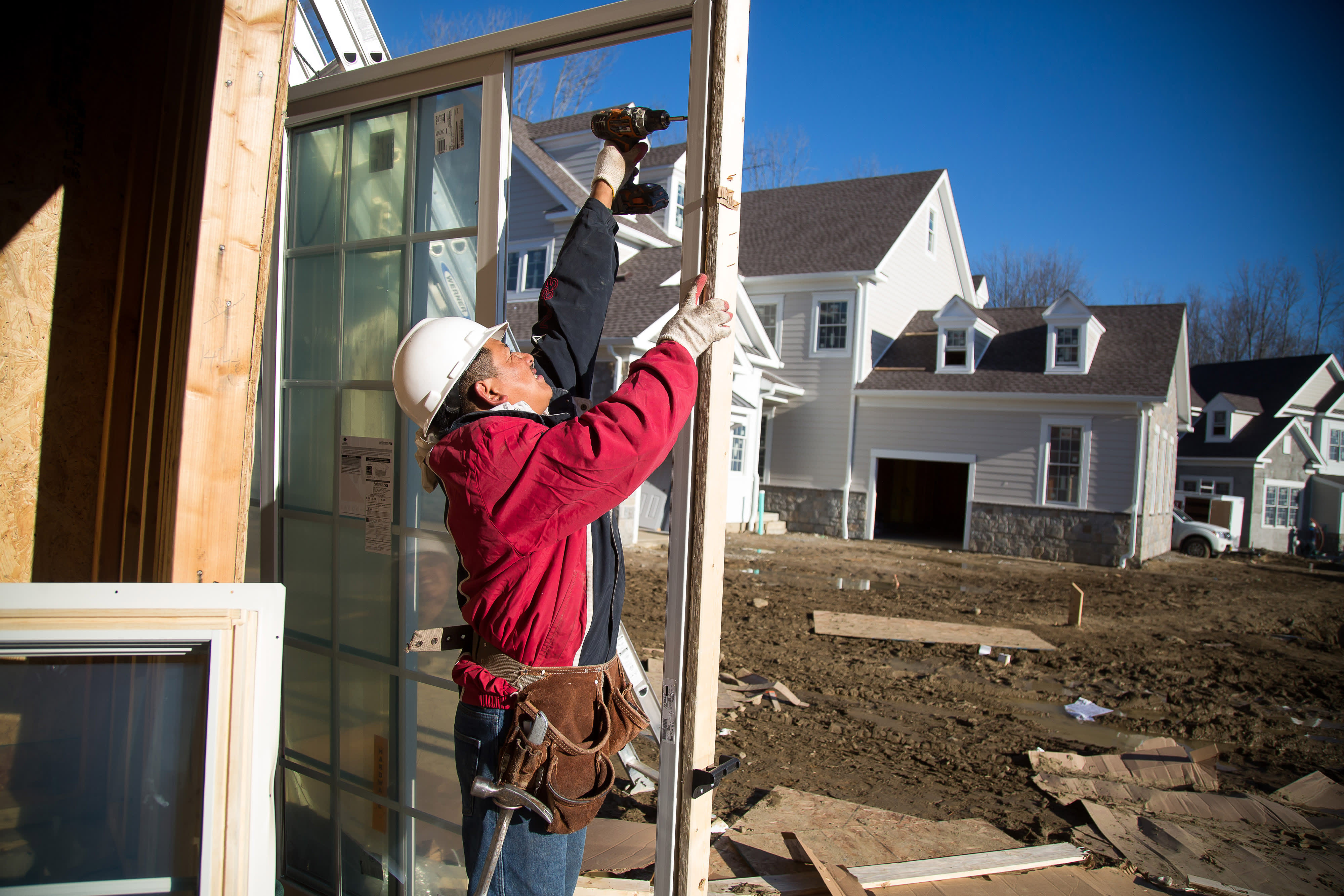
A contractor prepares a sliding door for a home under construction at the Toll Brothers Inc. Enclave at Rye Brook housing development in Rye Brook, New York
Michael Nagle | Bloomberg | Getty Images
Owning a home has long been the individual investor’s opportunity to hold real estate.
But the American millennial population is waiting longer than their parents to buy their first house, necessitating other avenues of investment into the world’s largest asset class.
Hoya Capital Real Estate started an exchange traded fund last March that its founder calls a macro play on the housing shortage in the United States. Some of its holdings, like Zillow and Redfin, are big winners in the real estate sector this year.
The Hoya Capital Housing ETF has rallied nearly 25% since its inception, bolstered by the low interest rate environment that accelerated last summer when the Federal Reserve started slashing interest rates.
The S&P 500 Homebuilders ETF is considered the benchmark for the housing market and has returned more than the Hoya Capital ETF since March, about 30%.
Hoya Capital’s founder and president Alex Pettee said the benchmark isn’t capturing the full macroeconomic picture that will persist through at least 2030. Trends in the mortgage market and what’s going on in real estate technology have become increasing important for investors who want their finger on the pulse of the housing market, Pettee said.
Hoya’s ETF, with an expense ratio of 45 basis points, is made up of 100 different stocks that touch the real estate sector. About 30% of the equities are home ownership and rental operations, such as AvalonBay and Essex Property Trust. The next 30% are homebuilders like Lennar, PulteGroup and Toll Brothers. Another 20% of the portfolio goes to home improvement and furnishing stocks, including Home Depot, Lowe’s and Restoration Hardware.
The more unique 20% of the Hoya ETF, which the S&P Homebuilders ETF doesn’t include, weighs home financing and real estate technology companies like Zillow, Redfin, CoreLogic, Realogy and RE/MAX. Zillow shares surged this week, bringing its year-to-date gain to more than 40%, after its quarterly results showed more people used its real estate website to buy and sell homes.
“A lot of consumers’ first touch point of the housing market is on Zillow or Redfin,” said Pettee.
Redfin has rallied 52% this year alone and shares of Realogy are up more than 35% in 2020.
A renter’s market
Homeownership in the United States has declined since the financial crisis, when the red-hot U.S. housing market collapsed under the weight of an over-leveraged banking system blanketed with subprime mortgages that were dressed as mortgage-backed securities.
In April of 2008, the homeownership rate was 68.1% in the U.S., and at the end of 2019 that rate was 65.1%, according to the Census Bureau.
Since the last recession, there has been a period of under-building of new homes and under-investment in existing homes, Pettee said. Currently, the average age of a U.S. home is between 39 and 40 years old, compared to 28 to 30 years old in 2008. The shortage is more prevalent on the starter-home category, where the supply of homes under the $100,000 figure is down 15%. That pushes more millennials, first-time and other younger buyers into the rental market.
Millennials, anyone born between 1981 and 1996, are buying homes later than their parents, creating a population bulge of 25 to 35 year-olds that are looking to settle down amid the housing shortage.
Renters represent a massive untapped audience for Hoya’s ETF, said Pettee. Instead of putting money into a savings account and earning 1% on the investment, they can own the index that reflects the 5% increase in home prices, he added.
“If you can put those savings into something that is more closely tracking the asset that you ultimately want to purchase, at least it’s serving as a kind of hedge to rising housing costs. You’re at least benefiting from higher home prices,” Pettee said.
Those homeowners who have 30% to 50% of their net worth tied up in their home might be a tougher sell to buy into the ETF; however, Pettee said owning the index could actually bring risk down for an investor’s biggest asset.
“Our message to the homeowners is that your biggest asset is concentrated in one particular zip code in one particular street, which is the ultimate undiversified asset,” said Pettee.
A major headwind for the ETF would be a spike in interest rates. When rates are low, people refinance their mortgages and usually put the extra cash each month back into their home. In a high-rate environment people generally buy fewer homes and under-invest in home improvements.
— with reporting from CNBC’s Nate Rattner.
Subscribe to CNBC PRO for exclusive insights and analysis, and live business day programming from around the world.



